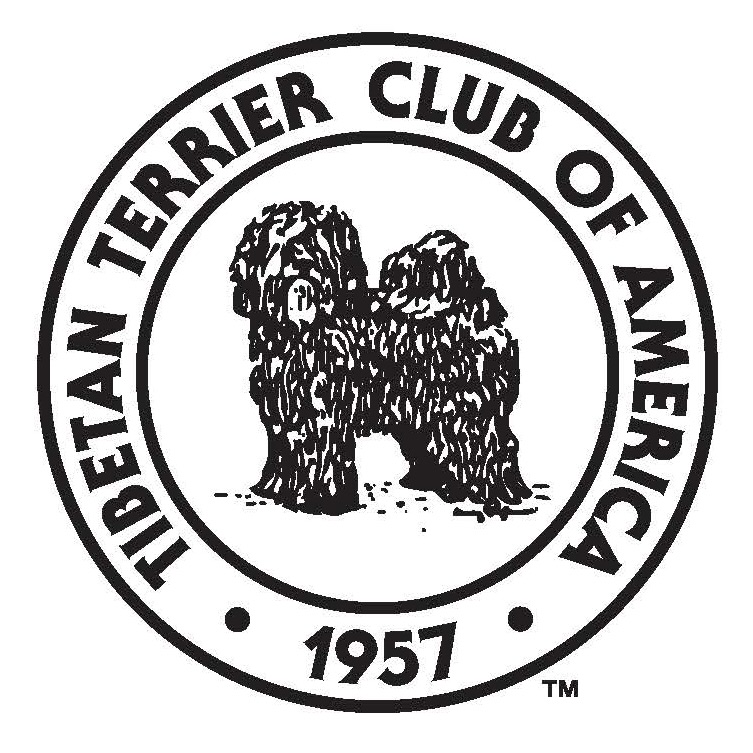History of the Tibetan Terrier


 The Tibetan Terrier, often called the “Holy Dog of Tibet”, originally came from the Himalayan country of Tibet, an isolated region north of India, from the region called the “Lost Valley” (“lost” when the access road was destroyed in the 14th century by a major earthquake). The breed was raised and bred in the monasteries by the Lamas for over 2,000 years.
The Tibetan Terrier, often called the “Holy Dog of Tibet”, originally came from the Himalayan country of Tibet, an isolated region north of India, from the region called the “Lost Valley” (“lost” when the access road was destroyed in the 14th century by a major earthquake). The breed was raised and bred in the monasteries by the Lamas for over 2,000 years.
The “little people”, as they were called, were highly valued as companions to the monks and families who owned them. They were treated like children in the family. Like the children, they eagerly assisted in taking care of the monastery’s or family’s property, their flocks, and herds. Believed to bring good luck, they were never sold, but were presented as gifts to important visitors or in return for some kindness. Sure-footed and reliable, they were sometimes sent to accompany a particularly esteemed traveler on a treacherous mountain journey home. In 1922, Dr. Agnes R.H.Greig, an English surgeon practicing medicine in northern India, was given a female Tibetan Terrier puppy in gratitude for saving a Tibetan woman’s life. Dr. Greig was intrigued with the puppy and eventually requested to show her at the Delhi Show in India.
The judges had never seen a dog like this before and suggested that Dr. Greig try to obtain a mate for her from Tibet, and to continue the breeding, to see if the dog bred true. This Dr. Greig did and in 1924 on Christmas Day, the first litter of her golden Tibetan Terrier, “Bunti”, and the male from Tibet, “Rajah” was born. Eventually, Dr. Greig showed three generations to the judges and the India Kennel Club. It was decided that this was a pure breed and should be called the Tibetan Terrier. Although the dogs were not true terriers, the breed was called “terrier” because it was of a size widely associated with terriers in England.Eventually Dr. Greig left India and returned to England permanently to raise her Tibetan Terriers there. She established the now-famous Lamleh Kennel and continued to promote the Tibetan Terrier under that kennel prefix. She successfully convinced The Kennel Club (England) to recognize the breed in 1937.After World War II, several other breeders became interested in the Tibetan Terrier.“It was decided that this was a pure breed and should be called the Tibetan Terrier. Although the dogs were not true terriers.”“The breed has slowly, but steadily grown in Popularity in North America since that time,BOTH AS A SHOW DOG AND AS A DELIGHTFUL COMPANION.”
Among them, Connie and John Downey who raised and showed the breed under the famous Luneville Kennels prefix. In 1956, the first reported Tibetan Terrier to come to America was “Gremlin Cortina,” a black with white female, imported by Alice Murphy of Grear Falls, Virginia, from the Lamleh Kennel. Mrs. Murphy later imported a mate for “Girlie” (as Gremlin Cortina was called.) He was a tri-color named Kalai of Lamleh. The first litter was born at the Murphy’s home in 1957 and “Lamleh of Kalai” became the suffix of Alice Murphy’s Tibetans Terriers.Mrs. Murphy subsequently acquired more Tibetan Terriers from Dr. Grieg and helped establish the breed in the United States. She was instrumental in founding the Tibetan Terrier Club of America in 1957. The breed has slowly, but steadily grown in popularity in North America since that time, both as a show dog and as a delightful companion. The Tibetan Terrier was accepted into the Non-Sporting Group of the American Kennel Club in 1973.The Tibetan Terrier has not achieved wide popularity in the US. However, one absolute fact is that the Tibetan Terrier is a survivor – little has changed even today from the first pictures and photographs received here in the West. It is also an accomplished master of many roles. The breed is an able participant in outdoor activities and performance competitions, including obedience and agility, as well as in the conformation ring.Today, it is, above all a loving and beautiful companion. Certainly it is a sentinel – no stranger approaches the home of a Tibetan Terrier owner unannounced!
By Florence Barczewski
References:
Cunliffe, Juliette. Tibetan Terrier. New Jersey: Kennel Club Books, LLC, 2006. Keleman, Anne. Tibetan Terrier, A Complete and Reliable Handbook. New Jersey: TFH Publications, Inc., 1997. Mathiasen, Hanne. Tibetan Terriers, The Little People. Denmark: 2006. Reif, Jane. The Tibetan Terrier Book.Connecticut: Southfarm Press, 1984.
